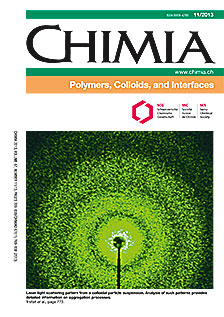Materials Taking a Lesson from Nature
DOI:
https://doi.org/10.2533/chimia.2013.782Keywords:
Biomaterials, Hierarchical structure formation, Oligopeptides, Supramolecular self-assemblyAbstract
Structural biomaterials with their often extraordinary properties and versatile functions are typically constructed from very limited sets of building blocks and types of supramolecular interactions. In this review we discuss how, inspired by nature's design principles for protein-based materials, oligopeptide-modified polymers can be used as a versatile toolbox to program nanostructure and hierarchical structure formation in synthetic materials.Downloads
Published
2013-11-27
Issue
Section
Scientific Articles
License
Copyright (c) 2013 Swiss Chemical Society

This work is licensed under a Creative Commons Attribution-NonCommercial 4.0 International License.
How to Cite
[1]
Chimia 2013, 67, 782, DOI: 10.2533/chimia.2013.782.







